Difference between Steel Pipe and Tube
Is it a Pipe or is it a Tube?
In certain instances, the two terms are sometimes used interchangeably, but there’s a key distinction between pipes and tubes specifically in the way that the material is ordered and tolerated. Tubes are used for structural purposes, and its outside diameter becomes the most important dimension. Tubes are typically used in healthcare devices which require exact outer diameters. The diameter on the outside is vital because it indicates how much it is able to support as a stability aspect. Pipes are typically used for transporting gasses or liquids, it is important to determine the capacity. Understanding the flow capacity via the pipe is crucial. The circular shape of the pipe makes it effective in managing the pressure from the liquid that flows through.
Classification
The two types of pipes are nominal and scheduled. Pipes are typically ordered according to the Nominal Pipe Size (NPS) standard and also by specifying the nominal size (pipe dimensions) and a schedule number (wall thickness). The schedule number may be the same for various sizes of pipe however actually the wall’s thickness may be different.
Tubes are usually ordered according to the outside size and diameter. However it can be ordered in OD & ID or ID and Wall Thickness. Strength of the tube is contingent on its thickness. The thickness of a tube can be measured by gauge numbers. The gauge numbers that are smaller indicate greater diameters outside. On the inside, size (ID) is an abstract concept. Tubes come in a variety of forms like round, rectangular, and square and piping is circular. The circular form of the pipe allows the pressure to be equally dispersed. Pipes can be used for larger applications, with sizes ranging from 1/2 inch up and up to multiple feet. Tubing is typically used in situations in which smaller diameters are needed.
Ordering Your Tubing or Pipe
Tubing is usually ordered according to OD and wall thickness. However it can also be ordered in the form of OD & ID or ID and Wall Thickness. Tubing is a material with three dimensions (O.D., I.D. as well as wall thickness) only two dimensions can be specified using tolerances, and the other is theoretical. The tubing is generally ordered and is held to more strict and tighter specs and tolerances as pipe. Pipe is normally ordered using the Nominal Pipe Size (NPS) standard, and is ordered by specifying the nominal dimension (pipe dimension) and a schedule number (wall thickness). Pipes and tubes can be bent, cut and flared as well as manufactured – take a look at the top 10 suggestions to purchase pipes and tubing.
Characteristics
There are some important characteristics that distinguish tubes from pipes:
Shape
Pipes are always round. Tubes are rectangular, square and round.
Measurement
Tube is usually purchased with an outside diameter and wall thickness. Tubes are usually kept to more exact specifications and tolerances than pipe. The majority of pipes are ordered with the NPS, the nominal size of pipe (NPS) standard, and with the help of the nominal diameter (pipe size) and the schedule number (wall thickness)
Telescoping Abilities
Tubes may be telescoped. Telescoping tubes are ideal for putting diverse pieces of material in order to wrap or expand inside each other.
Rigidity
It is rigid, and can’t be cut without specific equipment. Except for brass and copper, tubing can be bent with a little effort. The process of coiling and bending tubes can be accomplished without causing excessive distortion, wrinkles or breaking.
Applications
Tubes are utilized in various applications like medical devices that need an exact outside diameter. The outside diameter is vital as it determines how much it is able to be able to hold as a stabilization measure. Pipes are used to transport liquids or gasses, so it is essential to determine the capacity. Its circular design helps in handling the pressure of the liquid passing through.
Metal Types
Tubes are cold-rolled and hot rolling. Pipe is hot rolled only. Both are galvanized.
Size
Pipes accommodate larger applications. It is usually used when smaller diameters are needed.
Strength
Tubes are much stronger than pipes. Tubes are better suited for applications that require strength and durability.
Contact the Experts at Navbharat tubes
Since its founding in 1990, Navbharat tubes has earned an international reputation as a top tubing component and parts provider and is dedicated to serving the, energy, industrial and around the world. If you’re interested in getting the price of a particular product, follow the link below to begin!
https://www.navbharatsteel.com/
Read More
Cost-Effective Use in the use of Stainless Steel in Sugar Industry by Nav bharat tubes
The fight against corrosion in equipment used in the sugar processing process was extremely difficult up until the carbon steel alloy was substituted with 12 % chromium (12Cr) ferritic stainless steels . This alloy extends the life of the equipment in production and also reduces needed maintenance. The chromium alloying gives better corrosion resistance and endurance when compared with carbon steel. Furthermore, the 12Cr steel has a higher mechanical strength and superior abrasion resistance over conventional mild steel, making it an ideal engineering material for the sugar industry.
With no costly Nickel alloying, ferritic stainless steels aren’t as expensive as carbon steels. When you consider the total life Cycle costs, ongoing maintenance and replacement costs of carbon steels are significantly more expensive than stainless steels. As time passes more investors will choose stainless steel 12Cr over carbon steel for sugar upstream manufacturing equipment e.g. cane tables and cane carriers.
In the case of juice production and downstream applications where more resistance to corrosion than stainless steel with 12Cr as the base is required, most users opt for austenitic stainless steels like type 304, or the 316 . In addition to being more resistant to corrosion these austenitic stainless steels are also easy to form and weld. However the strength of their mechanics is less than stainless steels with 12Cr, and a higher proportion of alloying increases the cost of investment at first in addition.
Chemical composition, PRE calculations (PRE=%Cr + 3.3%Mo + 16%N) are calculated using Outokumpu’s typical values. **Values are based on ASTM A240.
In more harsh environments an alternative to types 304 or 316 could be Duplex stainless steels. Duplex stainless steel features the dual microstructure of ferrite as well as austenite. It combines the top qualities: toughness, high abrasion resistance and corrosion resistance. Due to these advantages Duplex grades are becoming seen as a viable option from a total life cycle cost perspective.
Additionally, there is an austenitic-based counterpart called Supra 316plus that has an alloying process that is more cost-effective, and includes nitrogen, which has higher resistance to corrosion than standard type 316 and has similar or slightly better resistance to corrosion.
In conclusion, stainless steel isn’t just one alloy. There are many alloys that are available with the advantages of a small number are discussed in this article. Nav bharat tubes will help you determine the most cost-effective option for your particular application using our extensive product range made of stainless steel. Cost savings of significant magnitude can be made by avoiding the need for maintenance and extending the service time.
Corrosion is a part of life in sugar mills as well as refineries. In India losses caused by the corrosion of sugar mills is estimated at around $250 million per year. This paper discusses the corrosion issue that has been studied within sugar factories in the Indian sugar industry and recommends the use of low-cost grades of stainless steels for equipment, instead of the typically used mild steels or the expensive stainless steels. The cost of life as well as the challenges in operating conditions in the sugar industry were examined.
Read More
Stainless steel is considered to be one of the most exceptional inventions in the history of mankind. Stainless steel stands apart from the rest of the metals due to its versatility in industries, in urban products and in domestic use. At Nav Bharat Tubes Pvt. Ltd., we manufacture stainless steel pipes, coils and sheets which can be turned into usable items for your home, industry or kitchen.
Stainless steel is a kind of metal alloy made from the combination of steel and other metals like nickel and chromium. The composition of the metal alloy used in stainless steel determines the grades which can vary from low to high which refers to quality, durability, and also temperature resistance.
Problems in Sugar Industry
Traditionally, equipments in the Sugar industry are made from mild steel which has resulted in corrosion, becoming a major factor to be addressed in the sugar industry. Some other issues include:
#1 Coloring in Sugar: It is estimated that about 20-25 kg equivalent of Fe2O3 is mixed in sugarcane juice for every 1000 tons processed through sulphitation process (Source: P Honig, Principles of Sugar Technology Part-I). This is a source of corrosion, giving a dark colour to the sugarcane juice, resulting in loss of whiteness.
#2 24×7 manufacturing: Continuous manufacturing gives less time for maintenance of equipments during the season. Corrosion occurs during the off-season due to atmospheric oxidation of mild steel equipment. During restarting, most of this rust is transferred to Sugar which needs re-melting to reduce wastage.
#3 Hygiene: The tanks and equipment fabricated from the mild steel is not conducive to hygiene and the resultant sugar fails to get a good price in highly competitive market.
The above-given reasons leading to corrosion has become a major challenge in the world and needs to be tackled in order to avoid economic losses. It is time to switch to stainless steel. Listed below are the range of equipments which will benefit from the use of appropriate grade of stainless steel. Pipes, coils and sheets made at Nav Bharat Tube Pvt. Ltd. can be further used to manufacture the following products.
Cane carrier side plates
Cane carrier chain links
Rake type intercarrier, Wear Pads troughs and rakes
Mill imbibition piping
Donnely chutes
Juice pump body and impellers (up to sulphited juice pump)
Mill juice gutters
Whirler tanks, screened juice and unscreened juice tanks
Bagasse carrier trough
Raw juice lines
Clarifier mud scrapers
Juice sulphiter
SO2 gas pipeline
Rotary vacuum filter filtrate lines and tanks
Juice heater covers
Juice heater condensate lines
Vacuum crystallizer top dome
Pan and last evaporator vapor lines
Condensate lines for an evaporator
Molasses gutters
Partition plates inside continuous centrifugal
Centrifugal basket ribs
Hopper trough and base plates
Benefits of using stainless steel in the sugar industry are:
Resistance to heat
Resistance to corrosion
Sturdiness
Ability to withstand shock and abrasion
Durability
Prevents contamination
Low maintenance
Can withstand dents and scratches even in aggressive operating conditions
Can withstand heavy wash downs using chemicals or other detergents
Is inert to alkalis and acids
If you are looking for the stainless steel products for sugar processing plant then Nav Bharat stainless steel is the best choice for you. To know more about our product range visit our website: www.Navbharattubes.com
Read More
Stainless Steel Condensate Pots – SS 304 Condensate Pots – 304 Steel Condensate Pots – Grade 304 Stainless Steel Condensate Pots Suppliers – UNS S30400 Condensate Pots Manufacturers in Mumbai (India), DIN 1.4301 Condensate Pots – SS 304 Seal Pots Manufacturers.
Nav Bharat Tubes is known for ensuring that patron satisfaction is our highest priority. We accept small and large orders.Condensate pots in stainless steel 304In a very efficient way. The world’s largest stock of high-quality alloys is available to us. We make sure that we have a steady supply of condensate containers in all standards, specifications, designations, and dimensions. This helps to avoid any shortages for our customers. We also have stock of altered dimensions, which can be difficult to find.
SS Condensate Pots – Stainless Steel 304 Seal Pots SS 304 Condensate Pot Seal Pots SS 304 Seal Pots Exporters SS 304 Seal Pots SS 304 Seal Pots, SS 304 Seal Pots Exporters SS 304 NPT Furnished Pots, SS 304 DRIP Pots SUS 304 2 Ports Condensate Pots Grade 304 SS Condensate Seal Pots Suppliers in Mumbai, India, Grade 304 SS Condensate Pots SS Condensate Pots Condensate Pots Condensate Pots Condensate Pots Condensate Pots Condensate Pots Condensate Pots Condens Condens Condensate Pots Condens Condens Condens Condens Condens Condens Condens Condensate Pots Condens Condens Condens Condens Condens Condens Suppliers
SS 304 Condensate Pots and SS 304 Condensate chamber, SS 304 Condensate Seal Pots and SS 304 Seal Pots. Stainless Steel 304 Condensate Seal Pots and Stainless Steel 304 Seal Pots. AISI 304 Condensate Seal Pots. Stainless Steel 304 NPT Condensate Pots.
The main purpose of SS condensate containers is to improve flow measurement accuracy in steam pipelines. They act as an interface between the condensed and vapor phases in the impulse line. Condensate pots come in a variety of grades and are designed according to the pressure design codes.
There are approximately 304 grades
Alloy 304 is an austenitic alloy grade that has been deeply drawn using the most recent machinery. This results in 304 grade being the most popular grade for applications in adverse environments. Stainless steel is resistant to corrosion in all corrosive environments, even those that are intermittent. This grade is resistant to pitting and crevice corrosion even in environments with high levels of chlorides.
Stainless Steel 304 Condensate Pots are resistant to stress corrosion cracking at temperatures up to 60 degrees C. They also resist oxidation in fluctuating temperatures up up to 870 degrees C. However this grade is not recommended to be used in higher temperatures.
Installation These lines can be placed horizontally or vertically between the flow meter/transmitter gauge. This acts as a barrier to fluid and allows direct measurement of flow conditions. To reduce errors, which may result from an uneven head of fluid connecting pressure line pressure lines, essential units should be mounted at the exact same level.
We are a trusted supplier of condensate containers and we perform different types of testing to verify the product’s reliability in adverse environments. We follow the global standards for testing condensate pots. Each one must pass these tests before any further processing can begin. These tests include the PMI, pressure, pitting corrosion, micro, leakage, chemical, mechanical, ultrasonic, and hardness tests. Other tests include the IGC, macro, radiography and tensile, compression, and other tests.
Packaging To ensure that our customers receive the best products, we pay attention to packaging. We pay attention to safety and make sure goods are safe during transit. For damage-free shipping, we use wooden boxes, pallets and wooden cages. Customers can request additional mountings. We use plastic rolling to prevent contamination.
Nav Bharat Tubes is a leader in the production of Stainless Steel 304 Condensate Pots. We can work with any national or international buyer to provide the products that are required for your specific application.
Quality Assurance
Stainless Steel S30400 Condensate pots are manufactured to international standards, such as ASTM and ASME. Before they can be dispatched, all products are subject to stringent quality control.
Material
Material tests on Stainless Steel 304 Condensate Pots include PMI Testing and Ultrasonic Test. Mechanical Testing and Spectro Tests to Chemical Analysis are also performed. Flaring Test, IGC, IGC are just a few of the material tests. These are just a few of the tests that we have conducted in our facility. Any representative of third-party inspection agencies or your agency is welcome to inspect our facility stage by stage.
Popular Searches
Ss304 condensate containers standards, stainless 304 seal vessels, stainless 304 condensate chambers, stainless 304 sealed chambers. Parker stainless 304 Condensate Pots Type 304.
Read More
Nav Bharat Stainless Steel is a leading and prominent manufacturer in the steel industry with over decades of experience. At Nav Bharat, the experts are experienced in guiding the customers with the right choice according to their requirement.
Now, you must be wondering why customers choose Nav Bharat over the competitors? Well, it’s is because of the premium quality of stainless steel that we offer to our customers, which has 100% spotless ace finish and 100% size precision. Not to mention it, the stainless steel provided at Nav bharat is absolutely free from corrosion and welding defects.
About Nav Bharat
Nav Bharat Stainless Steel is one of the reputed stainless steel manufacturers in this industry. Innovation, unmatched services and irreplaceable pipe quality is what we offer and always strive to accomplish. Our idea of success is not just to fulfill our defined goals and objectives, but also to refine them from time to time.
With commitment, passion, teamwork and excellence in our manufacturing, we have taken a long road to success. So, we are humbled, thrilled and motivated to work harder and deliver the desired solutions.
Why Nav Bharat Stainless Steel is Preferred?
As you must be aware of the fact that steel is categorized into two, one, stainless steel and second, mild steel. Nowadays, mild steel has become immensely prominent because for customers as well as manufacturers, it is cost effective. However, when you go into the details, you will realize that manufacturers are taking advantage of their customers because they can’t easily Distinguish The Stainless Steel And Mild Steel.
Of course, mild steel may be advantageous in certain terms, especially in cost. But the very fact remains the same is that mild steel or carbon steel has contents of iron and carbon, which ranges from 0.055 to 3% only. On the contrary, stainless steel, specifically Nav Bharat stainless steel contain 10.5% chromium by mass.
Moving further, there are various other advantages of buying stainless steel from Nav Bharat. First of all, it is absolutely corrosion resistance and that’s when it came into the spotlight. There are numerous Stainless Steel Manufacturers in India, which provides steel that maybe highly durable but is more vulnerable to corrosion or rust. Stainless steel at Nav Bharat guarantees protection against corrosion because the chromium of 10k grit is alloyed into the metal. Secondly, it is the appearance and spotless surface finish that attracts the customers who are looking for it! Stainless steel is lustrous and eye-catching in look and appearance because of the perfect blend of Chromium and Nickel. Therefore, whether you are seeking out stainless steel for grills, railings or gates, at Nav Bharat Stainless Steel, your every requirement will be fulfilled entirely!
CONCLUSION
To conclude, Nav Bharat stainless steel is making a mark in this industry by beating its competitors simply by providing quality, which customers are actually seeking for! Hence, while choosing the Stainless Steel Manufacturer, make sure that you have done all the research because not every manufacturer will provide you with the best quality.
Read More
Steel pipes and tubes industry is one of the important segments of the Indian steel sector. It contributes around 12% of the India’s steel consumption. Steel pipes & tubes are long hollow sections that are used for a variety of purposes. They are produced by two methods which result in either a welded or seamless pipe. In the both processes, raw steel is first cast into a more workable starting form. It is then made into a pipe by drawing the steel out into a seamless tube or forcing the edges to join together by welding. These are used mainly to convey fluids, and pneumatic conveying of solids. It can also be used as building material for structural applications. They are employed to protect electrical wires. They also find utility in automobiles, heating and plumbing systems, flagpoles and street lamps to name a few.
Now let us see the different types of steel pipes & tubes:
1. Structural Steel Tube: The tubes employed in constructions are known as structural tubes. They encompass strength, tolerance, and other beneficial properties that make them the right choice for building purposes. They find their usage in a myriad of constructional purposes like building towers, bridges, cranes, highway guardrails, and sign supports, etc. They are also referred to as high-strength welded steel tubes or HSS. The structural tubes are of three types – Rectangular Hollow Sections, Square Hollow Sections, and Round Hollow Sections. Structural steel tubes are used in construction of urban infrastructure, warehousing and affordable housing
2. Nav Bharat Pipe: Nav Bharat Tubes limited has been constantly implementing regular as well as personalized/customized orders for Stainless steel welded pipes to meet the need and requirements of several sectors. Along with this, we have a reliable source of quality pipes. We are a trusted brand for many years in the global market.
3. Ductile Iron Pipe: Ductile iron pipe is made of ductile cast iron commonly used for potable water transmission. These pipes are manufactured by centrifugal casting.
4. Precision Tube: Precision Tubes are widely used in making shock absorber, gas spring applications, tie rods, propeller shafts etc. These tubes are manufactured from high grade steel and are tested on various International as well as Indian standards. They are also used for manufacturing white goods.
5. Water Line Pipe: Steel pipes are comparatively expensive, but they are the strongest and most durable of all water supply pipes. They find their usage in water transportation for irrigation, industrial water lines and many more.
Read More

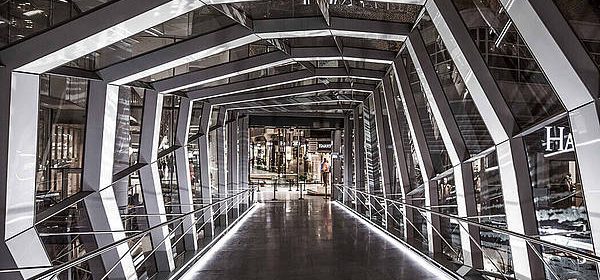
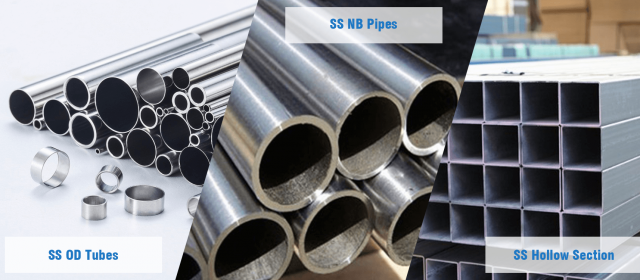
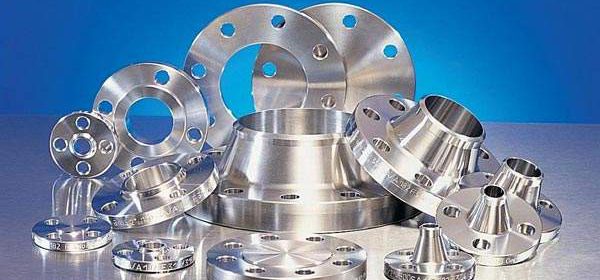
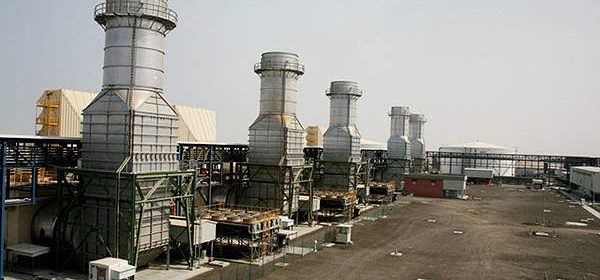
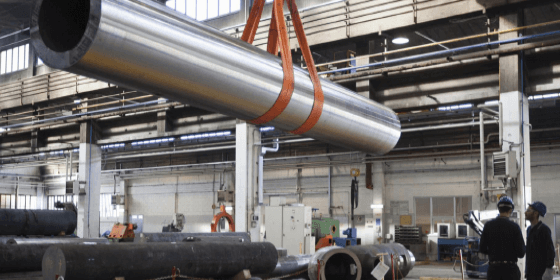

Recent Comments